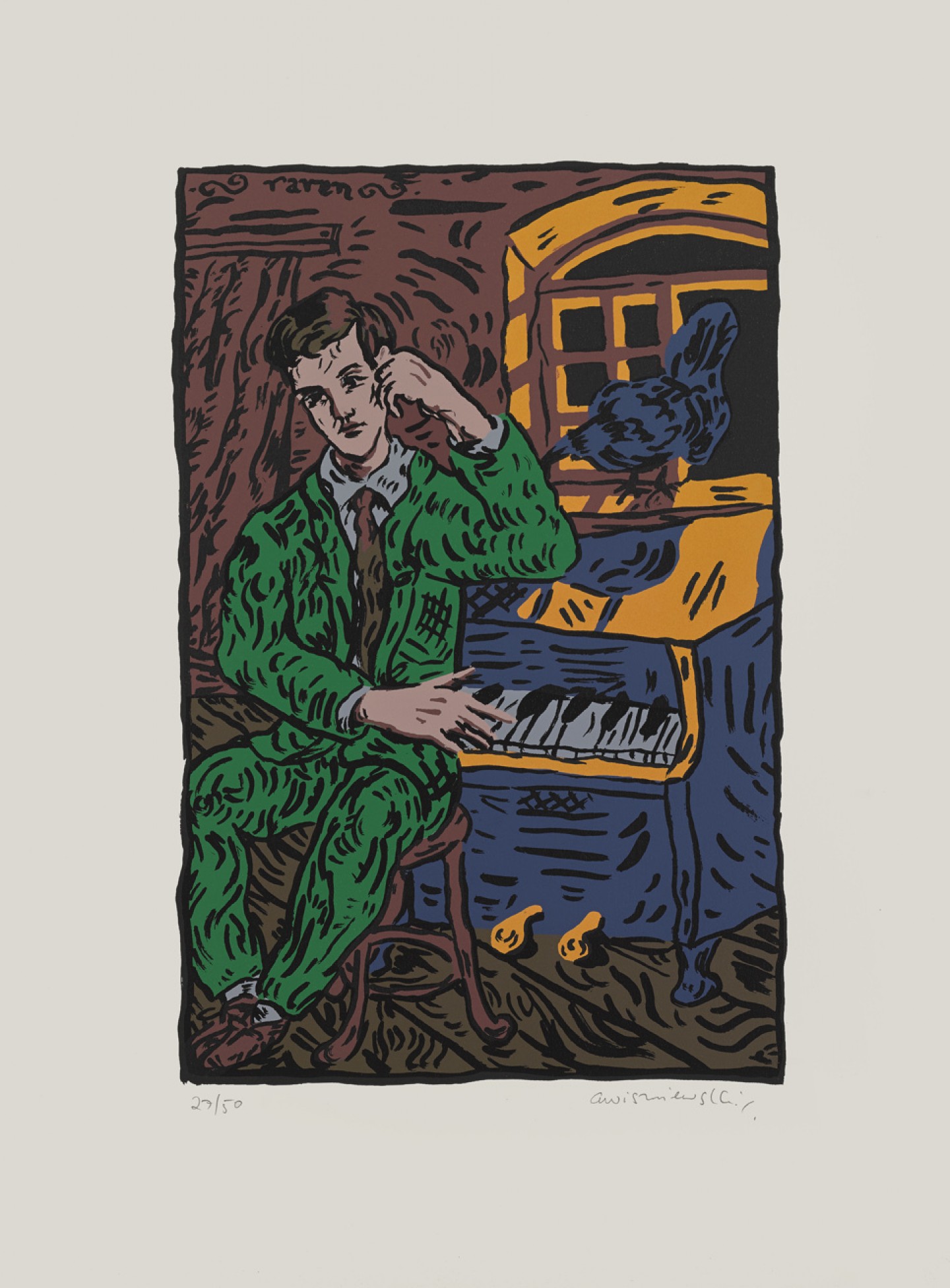DESCRIPTION
Howson's paintings capture the misery of the human situation in a direct, confident manner. The ability to represent the fundamental characteristics of society from the ground up, based on his experiences in the Army and in working-class Glasgow life.
DETAILS
-
Artist
Peter Howson
-
Date
1992
-
Medium
Oil on canvas
-
Object number
462
-
Dimensions unframed
213.5 × 153 cm
-
Dimensions framed
220 × 159 × 6 cm
-
Marks
Signed bottom left
-
Copyright
© Peter Howson. Flowers Gallery, London/ New York
ARTIST PROFILE
Peter Howson OBE, born 1958
Born in London and brought up in Ayr, Howson possessed an early talent for drawing, which was encouraged by his art teacher at school. He enrolled at Glasgow School of Art in 1975. However, it was an unhappy experience - he could not do what he wanted to do - and he left at the end of his second year to join the Royal Highland Fusiliers, an impulsive decision that he regretted almost immediately. He left the army less than a year later, and for a further year was employed in a series of mundane jobs. It was a difficult period in Howson's life, but it furnished him with a vast fund of material that subsequently he used in his painting.
In 1979, after three months' studio work at Hospitalfield in Arbroath, Angus, Howson returned to Glasgow School of Art, graduating in 1981. He enjoyed his final year at school, largely due to the encouragement and teaching of Alexander Moffat, who introduced him to German Expressionism and the work of Max Beckman. Important milestones in Howson's early career were serving for six months as Artist-in-Residence at St Andrew's University in 1985 and being represented in two important exhibitions of the work of selected young artists - New Image Glasgow in 1985 and The Vigorous Imagination at the Scottish National Gallery of Modern Art in Edinburgh in 1987. A retrospective exhibition of his work was held in 1993.
Howson's painting is characterized by strong draughtsmanship and even stronger images. In general he depicts a male-dominated world, populated by victim and victimizer (often the victim is also the victimizer), which draws on his experiences of both the army and Glasgow working-class life when he dropped out of Glasgow School of Art for two years. Aggression and depression are recurring themes.
Howson's work is represented in many major public and private collections throughout the world, including the Museum of Modern Art and the Metropolitan Museum of Art in New York and the Tate in London.







